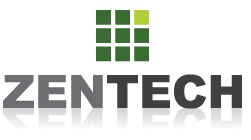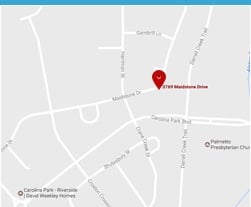 As technology continues to evolve, we must work to find ways to keep up with it. Although through-hole mounting or technology was the predominant option for developing printed circuit boards (PCBs) for decades, today's consumer demands require electronics manufacturers to embrace new technologies as a means of developing compact yet highly dense boards. The most popular solution has been surface mount technology.
As technology continues to evolve, we must work to find ways to keep up with it. Although through-hole mounting or technology was the predominant option for developing printed circuit boards (PCBs) for decades, today's consumer demands require electronics manufacturers to embrace new technologies as a means of developing compact yet highly dense boards. The most popular solution has been surface mount technology.
With these new methods, engineers and manufacturers are able to design and assemble boards that are extremely advanced and sophisticated without wasting space and money. But what is it about surface mount technology that allows for these technological achievements? And is through-hole mounting completely extinct, or are there situations in which it is still relevant? By comparing and contrasting these methods, we can understand why surface mount technology is the clear winner for the future of electronics manufacturing, and how through-mount technology fits into the big picture.
Through-Hole Mounting
When PC boards are constructed with a through-hole mounting methodology, holes must be drilled through the bare BCB so that leads can be placed through those holes. This was the original technology utilized in order to develop PCBs, and was, for years, considered to be the most efficient and effective method of doing so. Why was it so popular, and why has it now been replaced by surface mount technology? Read on for more information.
Pros
One of the biggest advantages of through-hole mounting is that it provides such strong mechanical bonds over other techniques. Despite the fact that surface mount technology has, by and large, replaced through-hole mounting, the latter is best able to enable engineers and manufacturers to deal with components that will undergo mechanical stress as the result of this mechanical bond. As an example, connectors or heavy components like transformers are generally better-suited to through-hole mounting.
Cons
Despite its advantages, through-hole is still considered to be a secondary operation in modern assembly facilities. Why? It's more expensive and complex. The drilling of holes into the bare board is very time-consuming, which results in added costs. In addition to these issues, this type of PCB production significantly limits the available routing area on multi-layered boards. This is because the drilled holes are required to pass through all of the PCBs layers. Finally, through-hole demands the use of hand-soldering techniques, which, on the whole tend to be far less reliable and repeatable than the reflow ovens that are utilized in surface mount technology.
Surface Mount Technology
Surface Mount Technology has taken the PCB assembly world by storm by enabling components to be directly mounted onto the surface of a PCB.
Pros
In today's world, consumers are demanding more compact, yet information-rich devices. Surface mount technology is the answer. This technology allows PC boards to be manufactured in much smaller sizes but with a higher component density. Due to the fact that drilling holes is nearly never required, this type of technology enables manufacturers to design and assemble boards much faster and for a fraction of the cost. It's also important to note that solder joint formation tends to be far more reliable and repeatable with the usage of programed reflow ovens. Finally, boards produced using surface mount technology have been proven to be more stable and to perform better in shake and vibrate conditions.
Considerations
As has been mentioned previously, surface mount technology may tend to be less reliable when used as the sole attachment method for those components that are regularly subject to mechanical stress, such as devices that need to be attached or detached on an ongoing basis. This is really the only major drawback of surface mount technology, and through-hole can be used in these cases.
Although you'll find that there are certain situations in which through-hole mounting is still applicable, it's clear that surface mount technology is best. By embracing this technology, we can carve the way into a more technologically advanced future.





